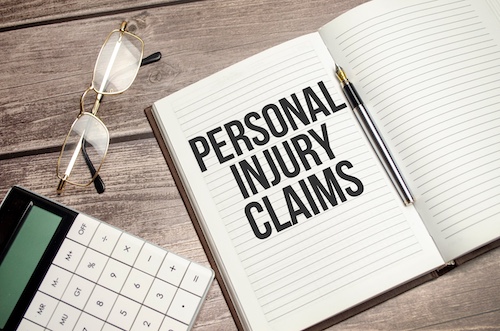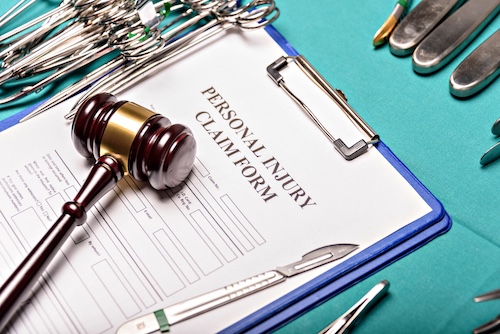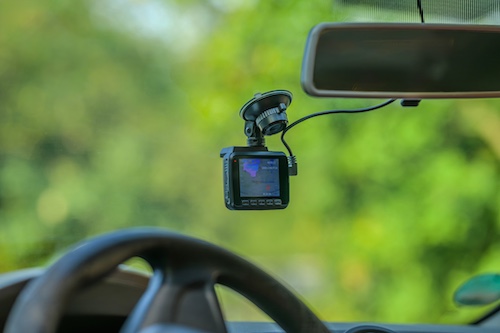Why Evidence Matters in Every North Carolina Personal Injury Claim
In North Carolina, the outcome of a personal injury claim depends on the strength of the evidence. Insurance companies and courts rely on clear facts to decide fault and determine compensation. Whether the case involves a car accident, slip and fall, or workplace injury, presenting strong personal injury evidence is critical. Medical records, witness statements, photographs, and expert opinions all help prove that someone else’s negligence caused the injuries.
In this blog, you’ll learn about the different types of evidence in personal injury claims in North Carolina and why working with an experienced Raleigh personal injury attorney can make a direct impact on the strength and outcome of your case.
Understanding the Legal Standard: Burden of Proof in NC Injury Claims
Every successful personal injury claim in North Carolina must meet the legal burden of proof. This standard decides whether the evidence is strong enough to hold the other party legally responsible.
What Is the Burden of Proof?
In a personal injury case, the burden of proof means the injured person must show that the other party caused the injury. The legal term for this is “preponderance of the evidence.” This means the plaintiff must present evidence that proves their version of events is more likely true than not.
Under North Carolina General Statutes § 1D-15, this burden falls on the person filing the personal injury lawsuit. If the evidence does not meet this standard, the injury claim fails.
How It Applies to Personal Injury Law
To succeed, a personal injury attorney must prove four things: duty, breach, causation, and damages. First, they must show the other party had a legal duty to act safely. Second, they must show the party failed to meet that duty. Third, they must prove that failure caused the plaintiff’s injuries. Finally, they must show clear proof of physical injuries, lost wages, or medical expenses.
The evidence in personal injury claims must be clear and well-documented. This includes medical records, police reports, and witness statements. These help show the extent of your injuries and how they resulted from someone else’s negligence.
Why Strong Evidence Matters in North Carolina
North Carolina follows a pure contributory negligence rule. This means if the injured person is found even 1% at fault, they cannot recover damages. Because of this strict rule, presenting strong personal injury evidence is critical. A personal injury lawyer must be prepared to prove that the other party was fully responsible.
Photographic and video evidence, detailed medical treatment records, and expert testimony are often key. These types of evidence can help establish negligence and support a successful claim.
The Role of a Personal Injury Attorney
An experienced personal injury attorney understands how to gather evidence, build a case, and present it clearly. They focus on proving the other party’s negligence without leaving room for doubt. In injury claims where insurance companies question fault or the extent of the plaintiff’s injuries, strong legal representation is essential.
Core Types of Evidence in Personal Injury Claims
To build a strong personal injury case, you need clear, organized evidence that supports every part of your claim.
Medical Evidence
Medical evidence is often the foundation of a personal injury claim. It shows the extent of your injuries and connects them directly to the incident. This includes medical records, bills, treatment plans, and notes from medical professionals. It also covers proof of ongoing medical care and future medical needs.
Seeking immediate medical attention after an accident helps support your claim. Comprehensive medical records can prevent insurance companies from arguing that your injuries were minor or unrelated. A personal injury lawyer may also use expert testimony to explain the medical impact of your injuries.
Photographic and Video Evidence
Photos and videos help show what happened and who is at fault. These include images of the accident scene, damaged property, visible injuries, and weather or road conditions. Video footage from surveillance cameras, dashcams, or bystanders can give a clear view of how the accident occurred.
Photographic and video evidence often supports claims where facts are disputed. This type of visual evidence can help prove negligence and protect against false claims.
Witness Statements and Testimony
Statements from witnesses can support your version of events. Neutral third parties who saw the accident can offer valuable testimony. Their observations can help establish how the accident occurred and who was responsible.
In addition to eyewitnesses, personal injury attorneys often work with expert witnesses. These include doctors, accident reconstruction specialists, and economists. Their testimony can support your claim about how the injury happened, the long-term effects, and the financial impact.
Official Reports and Records
Police reports and accident reports provide objective summaries of the incident. These reports often include witness names, diagrams, and officer opinions about who was at fault. Insurance companies and courts review these documents closely.
Other records that support your case include employment records for lost wages, insurance claim documents, and written communications related to the accident. These help show the financial impact of the injuries sustained.
Physical Evidence
Physical evidence includes any object that helps explain how the accident happened. This can include damaged personal items, debris from a vehicle, or torn clothing. Physical evidence can confirm injuries and support claims of how the accident occurred.
Keeping physical evidence in its original condition can help your personal injury attorney present a strong case. It helps create a clear timeline and supports your version of events.
Why These Types of Evidence Matter
Each piece of evidence helps prove that someone else’s negligence caused your injuries. In personal injury claims, the strength and clarity of your evidence often decide whether you receive the compensation you deserve. A personal injury lawyer knows how to gather evidence that meets the legal standard and supports every part of your case.
Strategic Use of Evidence: Building a Strong Personal Injury Case
Strong evidence in personal injury claims is not just collected, it is used with purpose to support every part of the legal process.
Connecting Evidence to Legal Elements
A successful personal injury claim must prove duty, breach, causation, and damages. Each type of evidence supports one or more of these elements. Medical records show the injuries sustained. Photos and video evidence can prove the accident occurred due to the other party’s negligence. Witness statements confirm the events and provide detail.
A personal injury attorney uses this evidence to link the facts to the law. This step is essential to establish liability and seek full compensation.
Timing and Preservation of Evidence
The legal process starts immediately after the accident. Delays in collecting evidence can weaken a personal injury case. Documents may be lost, memories fade, and physical evidence may no longer exist.
North Carolina law limits the time to file a personal injury lawsuit. Under N.C. Gen. Stat. § 1-52, the statute of limitations is three years from the date of the injury. A personal injury lawyer helps gather and preserve evidence before it is too late.
Avoiding Evidence Loss or Disputes
Proper handling of evidence prevents claims from being challenged. Photos must be time-stamped. Medical records must be complete. Physical items must be kept in a secure place. These steps reduce the risk of disputes with insurance companies or the defense.
An experienced personal injury attorney ensures that all evidence is organized and ready for use in negotiation or trial. They understand how to present evidence to strengthen the plaintiff’s injuries claim and prove negligence.
Using Expert Testimony Effectively
Expert witnesses can explain complex details in a simple, clear way. Medical professionals explain injuries and treatment. Accident experts explain how the incident happened. Economists explain lost wages and future medical costs.
This expert legal representation can increase the value of a personal injury case. It helps meet the burden of proof and adds weight to the injury claim.
How a Personal Injury Lawyer Builds a Case
A personal injury lawyer reviews every detail of the case and uses the evidence to guide legal strategies. This includes negotiating with insurance companies, preparing legal documents, and presenting facts in court if needed.
The right evidence helps prove that the defendant breached their duty and caused the injuries. With strong evidence and a clear presentation, a personal injury attorney can help secure the compensation you deserve.
Contact an Experienced Raleigh Personal Injury Attorney Today!
If you’ve been injured because of someone else’s negligence, the steps you take now can make all the difference. The strength of your evidence often decides whether you receive fair compensation or walk away with nothing. Our team at Mogy Law is here to help. We understand what it takes to build a strong personal injury case, and we know how to deal with insurance companies that try to minimize your claim.
Contact us at (901) 443-9133 for a free claim review today!








